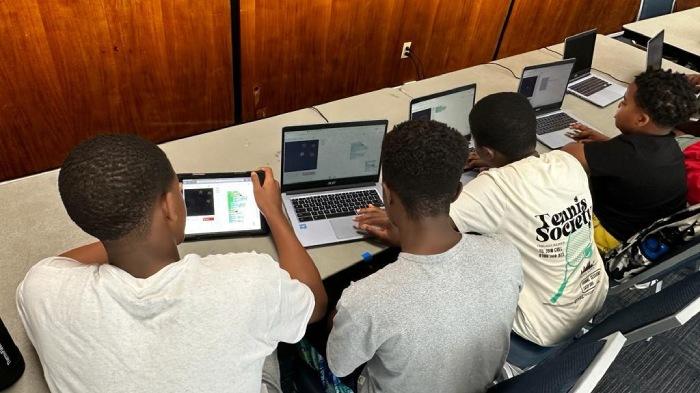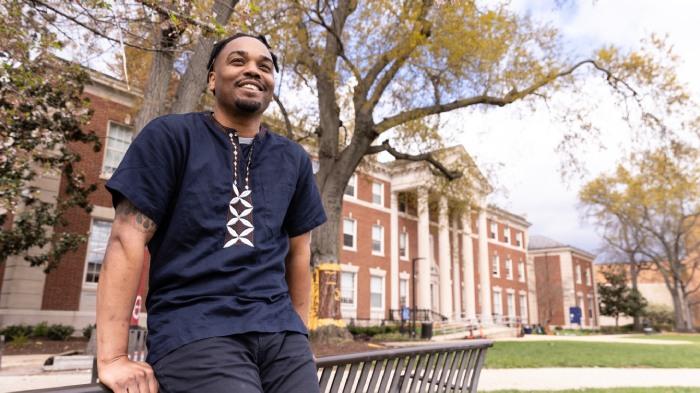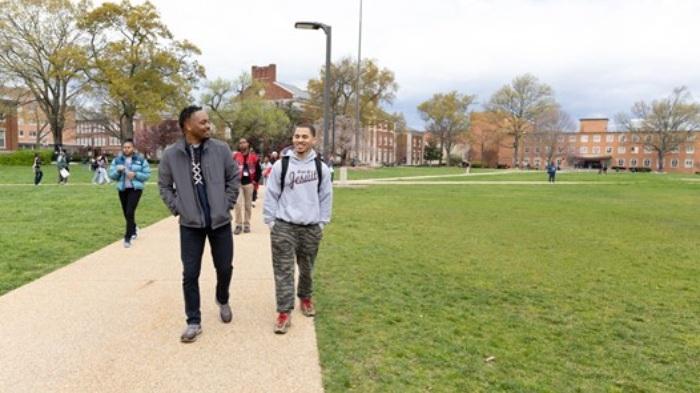Howard University’s Creative Twist on STEM Education
How a Verizon Innovative Learning program fuses art and history with science and tech.
In the heart of Washington, D.C., Howard University is redefining STEM education by embedding within it elements that reach far beyond the conventional realms of science, technology, engineering, and math. The Historically Black College and University (HBCU) has woven Black history and culture, meditation, yoga and African dance into the curriculum of its Verizon Innovative Learning STEM Achievers program.
Since Howard’s program launched in 2018, it has provided an environment for students in under-resourced communities to explore STEM subjects, learn problem-solving skills and gain exposure to career opportunities in technology. The program is housed in the university’s education department, as opposed to the math, science, or engineering departments, to offer a holistic approach to personal development. “I think our emphasis on children connecting STEM to a broader purpose makes us unique,” says Dr. Kofi LeNiles, a college professor and the program’s director. “We’re not just teaching STEM; we’re creating an experience.”
This unique approach is making an impact on the middle schoolers who participate each summer, allowing them to gain a broader, more holistic understanding of STEM and how they can use it to learn and solve problems. “I thought being an engineer was just a dream, but the program made me realize that I can do it,” says Nathan Pierre, 12, a seventh grader who participated in sports, 3D printing, and dance, alongside engineering classes, in the program last summer. “If I could go back to the program, I would. It was a lot of fun doing STEM and dance.”
The incorporation of dance and movement into STEM learning is one of the program’s unique elements. Nakima Smith, known as “Mama Nakima” to her students, is the movement instructor, as well as a teacher and professional dancer. STEM is the “blueprint” Smith refers to when instructing the African dance and movement class, she says.
“STEM uses the design thinking process, which requires scholars to empathize, define, ideate, create a prototype, test it out, and make any necessary revisions after the test run,” she explains. Her students complete the design thinking process as they move to the complicated rhythms of West African drumming. “As the program progresses, students become better adept at visualizing what the movements look like,” Smith says. “They work in a collective manner, gain insight into challenges and limitations of others in order to be solution-oriented, as well as test out and make revisions to movements as part of their learning process.”
The summer program also dives deep into the untold stories of people of color who are or were STEM innovators. “Learning about inventors who share their backgrounds can make the students feel like they belong in STEM,” says Taufiq Hassan, instructor of a class called Black and Brown Innovators. “I want them to be self-reliant in their thinking and have confidence in themselves.”
Dr. LeNiles agrees. “We try to make sure the children understand history and how Black and Brown groups and cultures have used technology over time, so they don’t feel like STEM is something that is detached from them, but that it has direct ties to their identity and solving problems within their community,” he says.
Through group sharing and self-reflection, the program also aims to shape students into leaders. According to Dr. LeNiles, the middle schoolers finish the program with more confidence and self-awareness, and the program’s mentors — college students who assist the instructors and help guide the students — experience this change as well. These mentors also provide another way for the students to “see themselves,” as they all come from various majors and backgrounds.
Marcus Fields, a sophomore studying human development at Howard, was a mentor in the program. He focused on empowering his students, making sure they felt included and confident. In turn, he found his own confidence increase, he says.
“After this mentoring opportunity, I realized the impact I could have on building a relationship between students and their education and how teachers build the foundation for how kids learn,” Fields says. “The Verizon Innovative Learning program really widened my perspective on education and teaching.”
For Nathan Pierre, who participated in the program last summer, the Verizon Innovative Learning program opened his eyes to a variety of opportunities, even as a middle schooler. “Every day, Nathan would come home very enthusiastic about the program,” says his mom, Regine Pierre. “It inspired so many things for Nathan. Now we’re thinking about getting a 3D printer of our own.”
By dancing to the rhythm of innovation, celebrating the heroes of the past and paving the way for a bright future, the Verizon Innovative Learning STEM Achievers program is ensuring students gain the skills they need to succeed in the digital economy. Dr. LeNiles says, “When you trace STEM back and you trace your legacy back, you realize that STEM starts with you.”
“We’re not just teaching STEM; we’re creating an experience.”
- Dr. Kofi LeNiles


![Dance, capoeira, yoga and meditation are a regular part of the Howard University Verizon Innovative Learning STEM Achievers program. “There are some dances we do today that are derived from African dance,” says Nakima Smith, the program’s dance and movement instructor. “[In the class], we talk about those connections. Those connections are vital.” Photo courtesy of Dr. Kofi LeNiles People dancing in an exercise room](/sites/default/files/styles/carousel_2x/public/images/2-howard-university-creative-twist-stem-education_VERIZON_050224.jpg)





